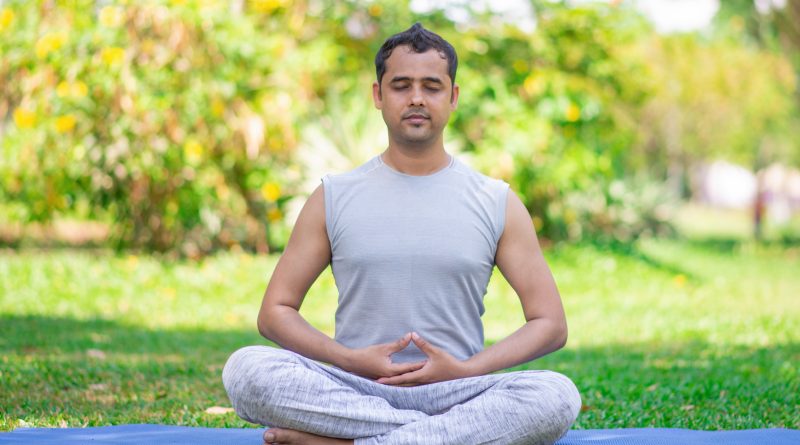India leads International Yoga Day
Dear Readers,
Over the past nine years, we have witnessed path-breaking changes in terms of innovation, research and development in the medical field. With seminal contribution to the furtherance of medical science, Indian doctors and medical experts have made their country proud in the eyes of the world.
Double Helical has been making a difference in the lives of the socially and economically disadvantaged groups through raising awareness as well making voluntary contributions in the areas of education, health, human rights and social services.
The magazine provides a platform to recognize innovation, people, products and services that are helping to transform the healthcare sector in the country and ushering in affordable, high quality and inclusive healthcare for masses. On the International Day of Yoga, WHO and its member states in the South- East Asia Region lead global efforts to celebrate the physical and mental health benefits of Yoga and its contributions to life-long health and well-being. Recently PM Narendra Modi led a unique yoga session at the U.N. Headquarters in a historic celebration to commemorate the 9th International Day of Yoga.
In recognition of universal appeal, the United Nations declared 21 June to be the International Day of Yoga in 2014. The purpose of the International Day of Yoga is to increase public awareness of the various advantages of yoga practice. Yoga practices focus on bringing harmony between mind and body as also between human being and nature.
Yoga helps in attaining psycho-physiological wellbeing, emotional balance; and copes with routine stress. It is well known that Yogic practices such as Yogasanas (Physical postures), Pranayama (Breathing practices), Dhyana (meditation), cleansing and relaxation practices etc. help modify and regulate the responses to stressors and are beneficial in stress and its consequences. Numerous randomized controlled studies have shown the efficacy of Yogic practices in management of non- communicable diseases like hypertension, Chronic Obstructive Pulmonary disease (COPD), bronchial asthma, diabetes, sleep disorders, depression, and obesity.
Meditation helps combat stress and related disorders. Practicing meditation helps reduce inflammatory responses. Meditation decreases sympathetic overstimulation and reduces cholesterol levels. It helps increase exercise tolerance, reduce anxiety and enhance maximal workload in an individual. The WHO-Global Centre for Traditional Medicine (GCTM), is rapidly coming up in Jamnagar, India., The WHO along with India during its G20 Presidency is going to organize the first ever Traditional Medicine Global Summit in Gandhinagar, India on 17-18 August 2023 on the theme of ‘Towards Heath and Well-being for all’ is another landmark event highlighting the growing eminence of Traditional medicine including Yoga. The summit will focus on the evidence based Traditional Medicine for the Health and Well-being of People and the Planet. However, despite the popularity and demonstrated effect of yoga for many conditions, including multiple sclerosis, asthma, irritable bowel syndrome, lymphoma, hypertension, drug addiction, osteoarthritis, and mental health issues. Researchers suggest that yoga as an intellectual and mental exercise and can improve the psychological conditions for monitoring and managing stress and negative emotions, increase positive emotions, and help maintain mental balance.
However, despite the popularity and the positive psychological and physiological effects of yoga, it is not widely studied to find how much it really prevents and treats mental disorders and still wider and more rigorous studies would be needed to test the validity of the yoga in mental health. Engaging in physical activity, even in the form of gentle yoga can also stimulates and release of endorphins, dopamine and serotonin which are natural mood-boosting chemicals. Let's all commit to practicing yoga regularly on this International Day of Yoga to create a future where everyone is healthier, happier, and stress-free
In current issue we highlight “The epidemiology of diabetes” as special story. As you know that the epidemiology of diabetes in India is unique. The determinants are both nature and nurture, against the background of malnutrition at both ends of the life course: under-nutrition in the uterus and early childhood, and over-nutrition in adult life. The thrifty gene hypothesis, formulated by the American geneticist and travelling scientist James V. Neel in 1962, proposed that indigenous peoples were genetically predisposed to Type 2 diabetes due to the floodways of their ancestors. It means this hypothesis proposes the genetic features that promoted accumulation of fat around the waist (central obesity) helped individuals with such genotype to survive periods of deprivation such as great famines.
As per latest report, almost 20% of newborns in India have low birth weight which indicates intrauterine growth restriction. These children who face foetal and early child nutritional deprivation will be at high risk for developing diabetes and metabolic syndrome in adulthood. To prevent future cohorts of under-nourished children contributing to the next generation of adult diabetics we urgently need to address our problems of maternal and child under-nutrition.
There is more such interesting and thought-provoking stuff to savour in this issue. So, happy reading!
Thanks and regards
Amresh K Tiwary,
Editor-in-Chief

